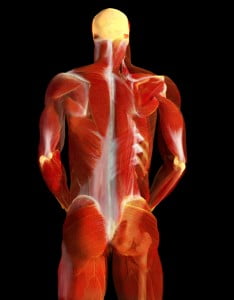 Nearly all individuals experience degenerative changes in the spine as they age, with nearly 20% of the population exhibiting disc herniations without any symptoms or pain by the age of 50(1). This means that even though your X-ray or MRI shows an abnormality, it doesn’t mean that this is what is causing your pain. Though imaging studies can be valuable tools, they are not equipped to show the nuances of the muscles and soft tissue.
Nearly all individuals experience degenerative changes in the spine as they age, with nearly 20% of the population exhibiting disc herniations without any symptoms or pain by the age of 50(1). This means that even though your X-ray or MRI shows an abnormality, it doesn’t mean that this is what is causing your pain. Though imaging studies can be valuable tools, they are not equipped to show the nuances of the muscles and soft tissue.
In 2001, a study(2) of more than twenty thousand patients at outpatient medical clinics in the United States found that sprains and strains of muscles and other soft tissue accounted for 70-80% of all back pain. Since muscles play such a large role in pain, and imaging studies cannot give us enough information about the state of the muscles, a thorough physical examination is necessary to evaluate the soft tissue as a source of pain.
Even if you are diagnosed with a separate condition, like spinal stenosis or fibromyalgia, if soft tissue has not been examined not only for tenderness or spasm but in addition as a source of pain, it is possible that muscles are contributing to your pain. Over the next few blogs, I will talk about different patients who came to me with a variety of diagnoses that were thought to be the cause of their pain, who were able to reduce or eliminate their pain by treating their muscles.
1 Zimmerman, Robert D. “A Review of Utilization of Diagnostic Imaging in the Evaluation of Patients with Back Pain: The When and What of Back Pain Imaging.” Journal of Back and Musculoskeletal Rehabilitation 8 (1997): 125-33. Print.
2 Weinstein, Deyo NEJM
Filed under: muscle pain posts
Like this post? Subscribe to my RSS feed and get loads more!


